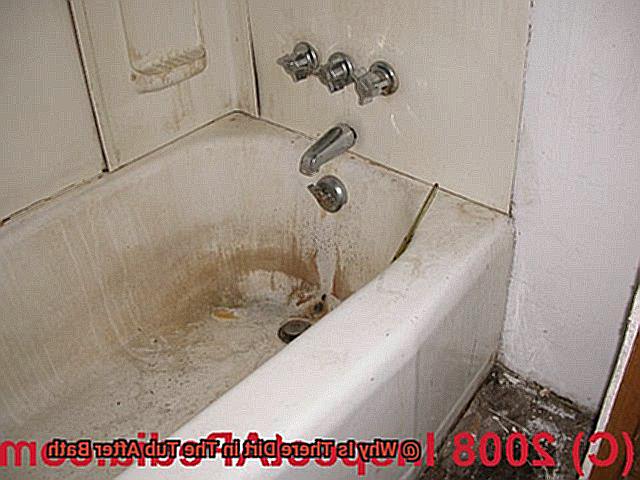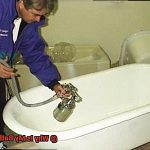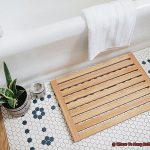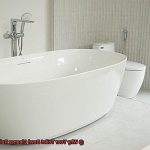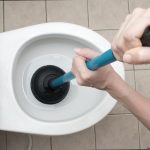Picture this: you’ve just finished a long, luxurious soak in the tub.
You feel relaxed, rejuvenated, and ready to take on the world. But as you drain the water, you notice something unsettling: dirt and grime lining the sides of your once-pristine tub.
What gives? You might assume that the dirt is simply coming from your body – after all, we all shed dead skin cells on a daily basis.
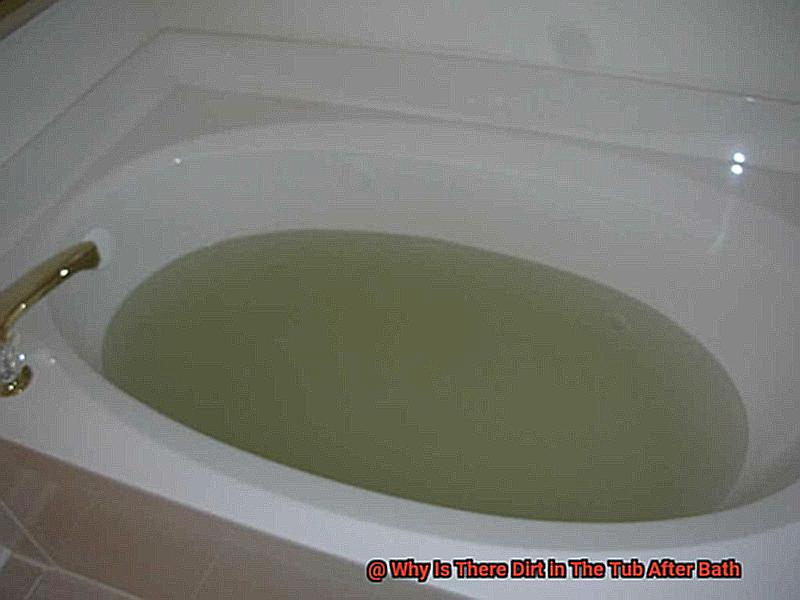
But the truth is more complicated than that. In reality, most of the dirt in your tub actually comes from external sources.
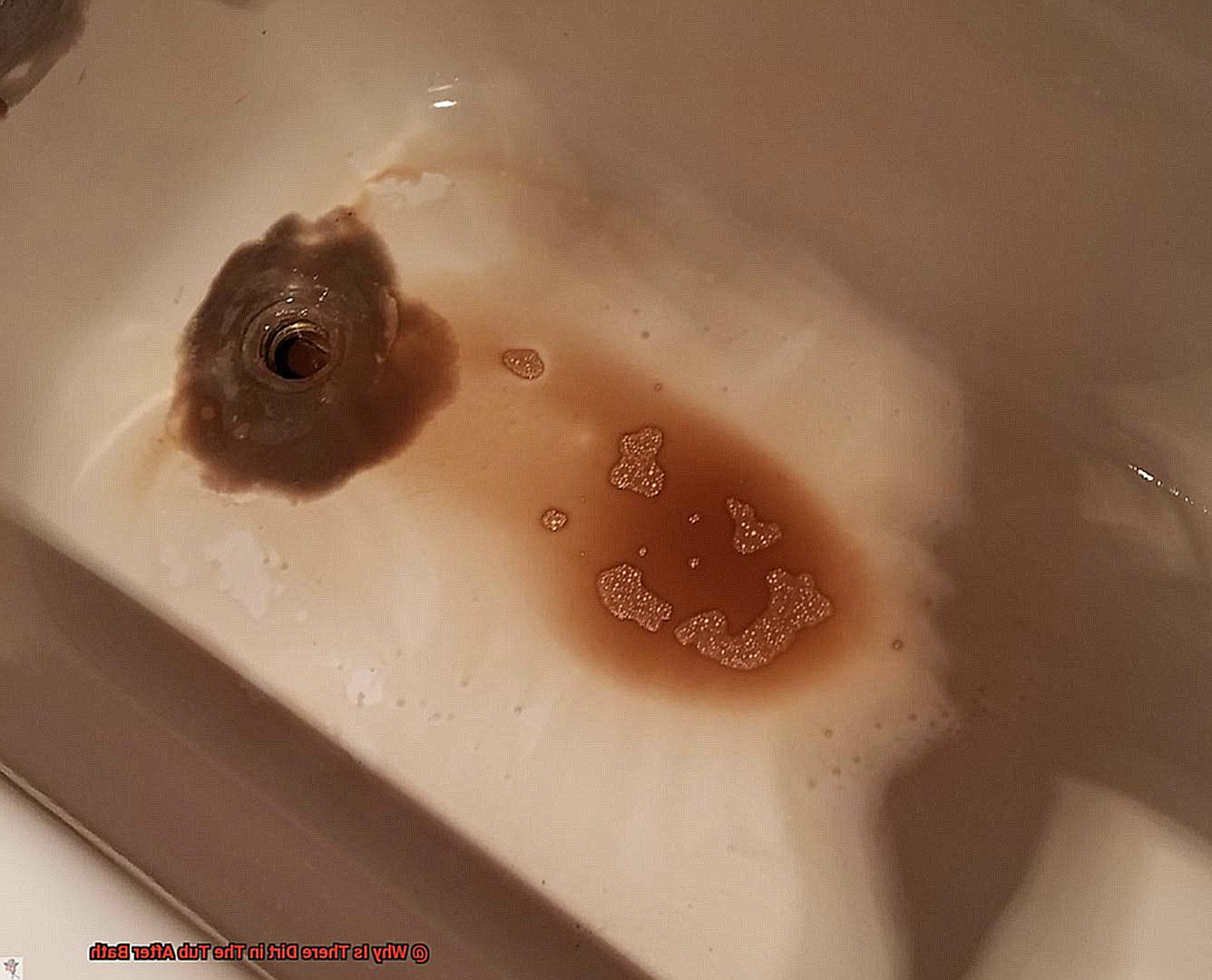
Throughout the day, particles like dust and dirt can easily cling to our skin and hair. When we bathe, these particles wash off and end up in the tub.
But that’s not all. If you have hard water, mineral buildup in your pipes can flake off and make its way into your bathwater.
And let’s not forget about soap scum – over time, it can build up in your tub and leave behind a stubborn film of grime. So what can you do to combat this pesky problem?
By taking a closer look at your environment and bathing routine, you can minimize the accumulation of unwanted particles and enjoy a cleaner soak. From using a shower filter to regularly cleaning your tub with natural cleaners like vinegar or baking soda, there are plenty of simple solutions at your disposal.
Don’t let dirty bathwater ruin your relaxation time – take action today to keep things squeaky clean.
Contents
- 1 What Causes Dirt in the Tub After a Bath?
- 2 Dead Skin Cells
- 3 Hair Shedding
- 4 Debris from Other Areas of the Bathroom
- 5 How to Avoid Dirt Accumulation in the Tub
- 5.1 Clean Your Tub Regularly
- 5.2 Keeping your bathtub clean is one of the most effective ways to prevent dirt accumulation. Use a mild cleaner and scrub the tub with a soft brush or sponge. Rinse thoroughly with water after cleaning to remove any residue.
- 5.3 Use Bath Mats
- 5.4 Rinse Yourself Before Entering the Tub
- 5.5 A drain cover can help prevent dirt and hair from going down the drain and clogging it up. This will also make it easier to clean your tub since you won’t have to worry about removing any debris from the drain.
- 5.6 Avoid Using Oily Products
- 6 Cleaning and Maintenance Tips for Keeping Your Tub Clean
- 7 How to Remove Existing Buildup from the Tub
- 8 Common Mistakes to Avoid When Cleaning the Tub
- 9 Conclusion
What Causes Dirt in the Tub After a Bath?
As an expert on this topic, I am here to explain the various reasons why dirt accumulates in the tub after a bath and offer some tips on how to keep it clean.
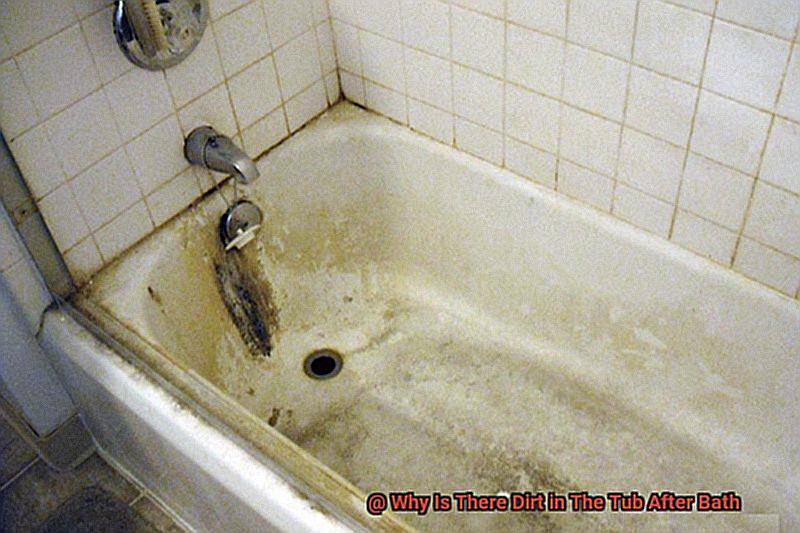
One of the main culprits for dirt in the tub after a bath is dead skin cells. Our bodies naturally shed skin cells, which, when mixed with water and soap, create a residue that sticks to the sides of the tub.
This residue can appear as dirt or grime and can build up over time if not cleaned properly. Another cause of dirt in the tub after a bath is soap scum.
Soap scum is a sticky substance formed by soap particles and hard water minerals that can cling to the surfaces of your tub. This scum creates a film on your tub surface, which attracts dirt and grime, making it harder to clean.
In addition, if you have hard water, mineral buildup can occur in your tub. Hard water contains high levels of dissolved minerals like calcium and magnesium that can lead to mineral deposits forming on the surfaces of your tub.
These deposits create an environment that attracts dirt and grime. Furthermore, pets and children who use the same bathtub can contribute to dirt buildup.
Pets shed hair and dander that can accumulate in the tub, while children may accidentally leave dirt or sand behind from their feet or toys. To prevent dirt buildup in your tub after a bath, it’s important to regularly clean it.
You can use a baking soda and vinegar mixture to scrub away soap scum and hard water stains. Additionally, using a drain strainer can help prevent hair and other debris from going down the drain.
However, with regular cleaning and maintenance, you can prevent the buildup of dirt and grime, ensuring a clean and healthy environment for your next bath.
Dead Skin Cells
Yes. As our skin sheds dead skin cells every day, these cells can accumulate on the surface of the bathtub, mixing with soap and other bath products to form a stubborn layer of grime that’s tough to remove.
The amount of dead skin cells shed by our body can vary depending on a range of factors.
For example, children tend to shed more dead skin cells than adults because their skin is still developing and growing. Additionally, people with certain medical conditions such as psoriasis or eczema may also shed more dead skin cells than others.
So, what can you do to reduce the amount of dead skin cells in your bathtub after a bath? Regular exfoliation and cleaning are key.
Exfoliating helps to remove dead skin cells from the surface of your skin, preventing them from accumulating in the bathtub.
And using a bathtub cleaner can help to remove any remaining dead skin cells and grime from the tub.
Hair Shedding
But fret not, dear reader, for this is a natural occurrence that happens to everyone.
On an average day, we shed around 50 to 100 hairs, and this number can increase during a shower or bath due to the water and shampoo. But why does hair shedding contribute to the dirt found in the tub?
It’s quite simple. The hairs that fall out during your bath can cling to your skin or accumulate on the tub surface, contributing to the dirt found after a bath.
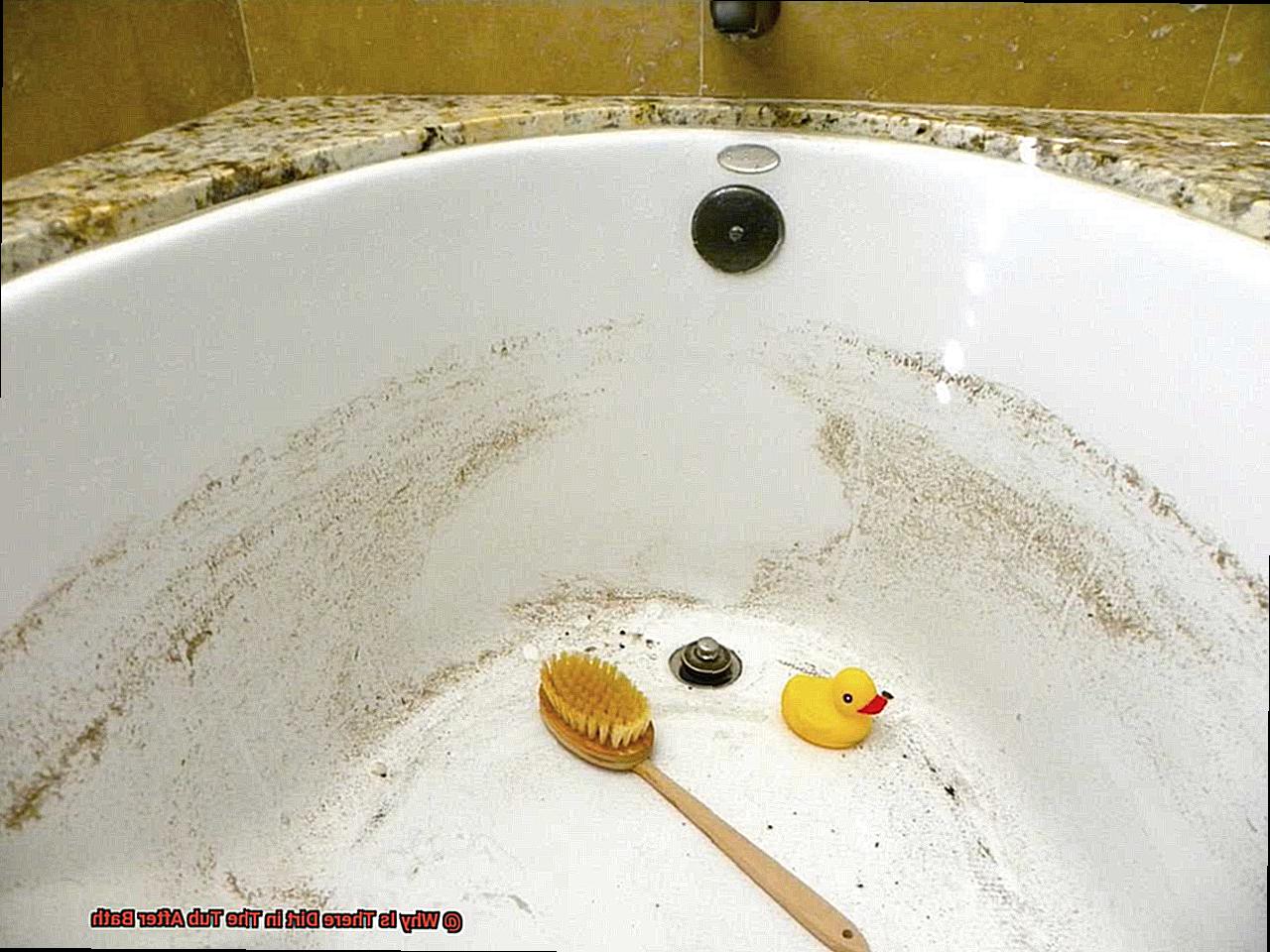
To maintain hygiene, it’s crucial to clean the tub thoroughly after each use. Now let’s delve into what causes hair shedding during a bath.
When hair follicles become wet and soft, they become easier to detach from the scalp. Moreover, using hot water during a shower or bath weakens the hair roots and makes them more susceptible to falling out.
And if you’re someone who loves vigorously scrubbing your scalp while shampooing – like me – this can also lead to more hair loss as the friction caused by the scrubbing action stimulates the scalp. So how can we prevent clogged drains and maintain hygiene?
Using a drain catcher or strainer can prevent hair from going down the drain and clogging it. Proper cleaning and maintenance of the tub can also prevent buildup and maintain hygiene.
Debris from Other Areas of the Bathroom
While hair is often the main culprit, there are other factors that can contribute to the dirt found in your tub – debris from other areas of the bathroom.
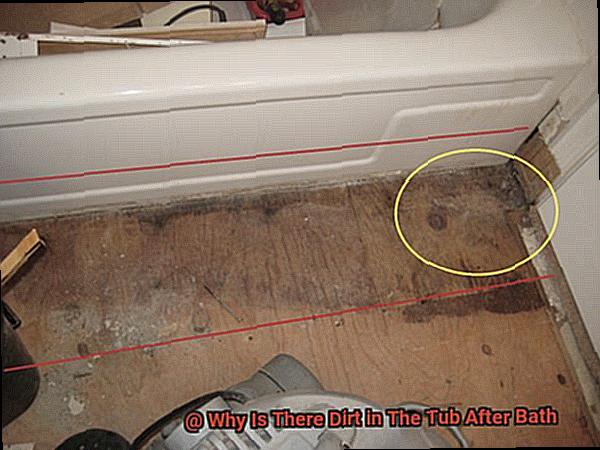
Skin particles, toilet paper residue, and dust from cleaning supplies can all make their way into the tub, transported by water droplets or dirty feet. Fortunately, there are several simple solutions to prevent this from happening.
First and foremost, practicing good hygiene habits in the bathroom is essential. Regularly sweeping and mopping the floor can significantly reduce the amount of hair and skin particles that accumulate.
Cleaning the toilet regularly and disposing of used toilet paper properly can also prevent any residue from ending up in your tub. To capture any debris before it enters your bath, using a shower mat or non-slip bath mat outside of the tub is a fantastic solution.
These mats are easy to clean and can drastically reduce the amount of dirt that ends up in your bathtub. Lastly, it’s crucial to choose cleaning supplies that won’t leave behind residue or dirt.
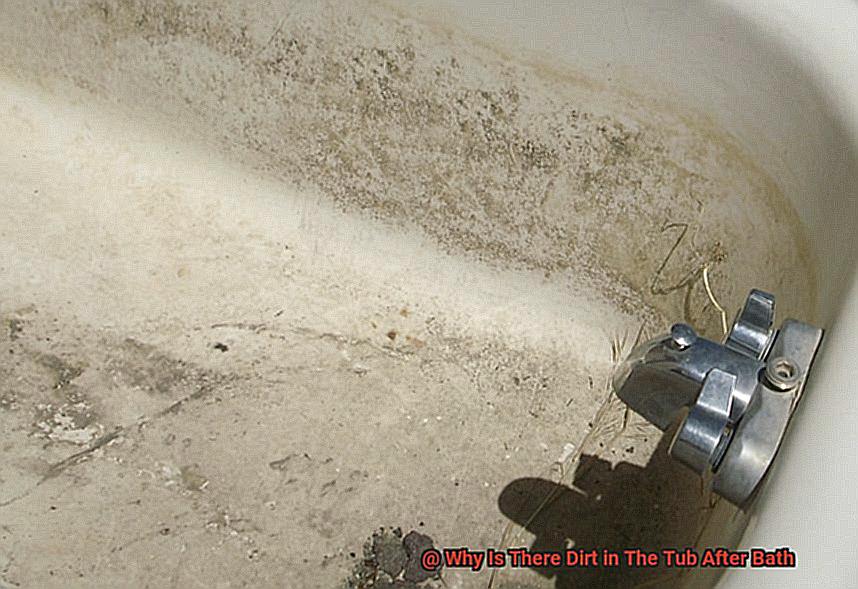
By taking these preventative measures, you can keep your bathtub hygienic, prevent clogged drains, and enjoy a relaxing bath without any unwanted debris floating around you.
How to Avoid Dirt Accumulation in the Tub
Clean Your Tub Regularly
Keeping your bathtub clean is one of the most effective ways to prevent dirt accumulation. Use a mild cleaner and scrub the tub with a soft brush or sponge. Rinse thoroughly with water after cleaning to remove any residue.
Use Bath Mats
Bath mats are designed to prevent dirt and grime from sticking to the bottom of your tub. Place a bath mat inside your bathtub before taking a shower or bath, as this will prevent you from standing directly on the surface of the tub.
Rinse Yourself Before Entering the Tub
Rinsing yourself before entering the tub can help remove any loose dirt, hair, or dead skin cells that could accumulate in the tub during your bath or shower.
Use a Drain Cover
A drain cover can help prevent dirt and hair from going down the drain and clogging it up. This will also make it easier to clean your tub since you won’t have to worry about removing any debris from the drain.
Avoid Using Oily Products
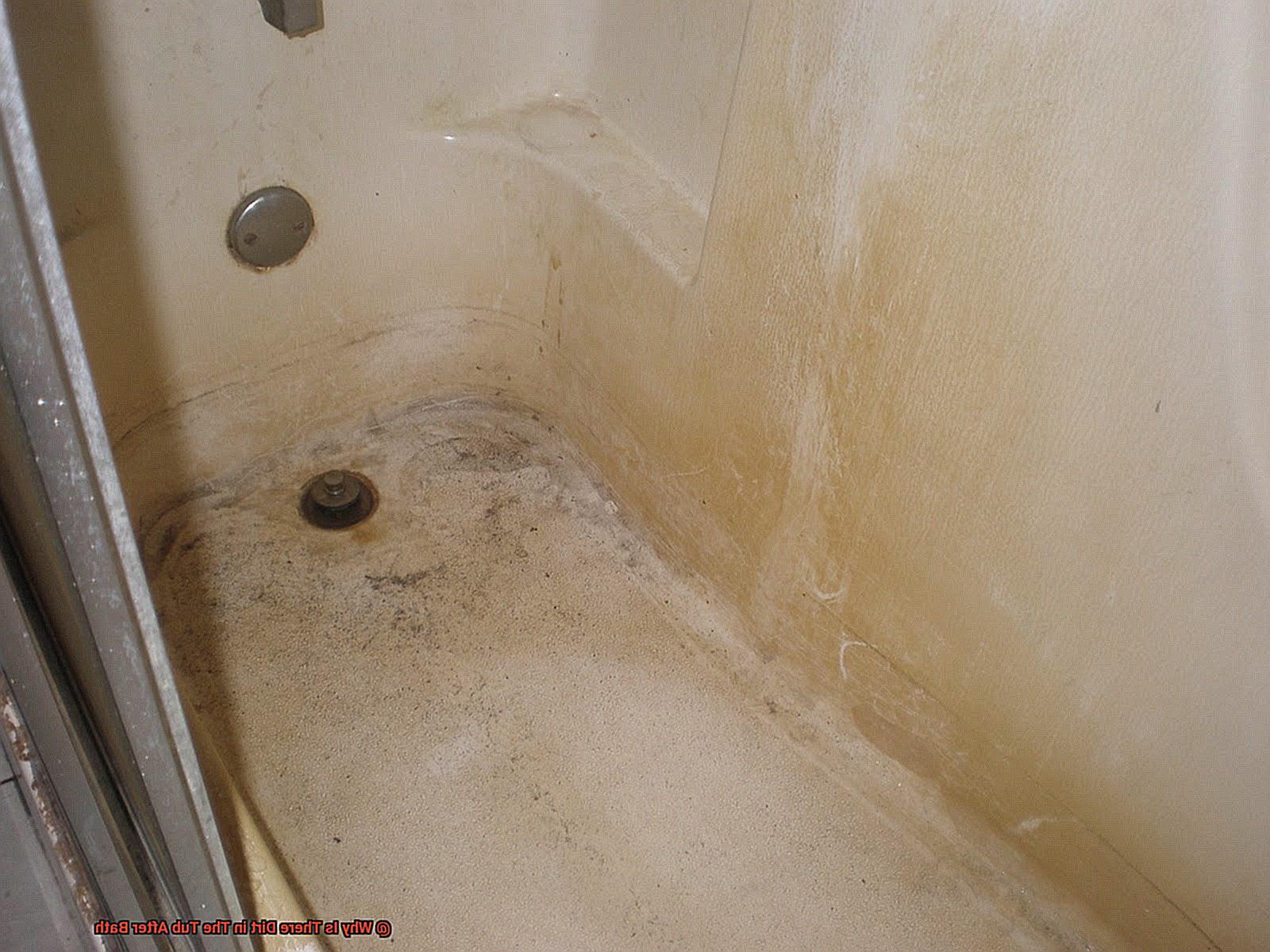
Oily products like body lotions or hair conditioners can leave a residue on the surface of your bathtub, which can attract dirt and grime. Try to avoid using these products while taking a bath or shower. If you do use them, make sure to clean your tub thoroughly after each use.
Cleaning and Maintenance Tips for Keeping Your Tub Clean
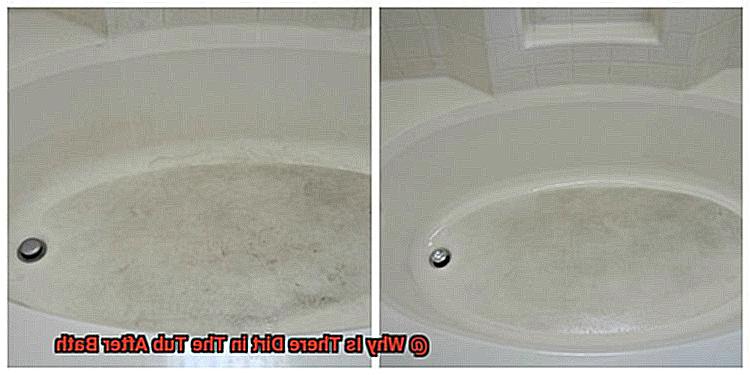
One area that often requires extra attention is the bathroom, especially the tub. Your tub is a place of relaxation and rejuvenation, but it can also be a breeding ground for dirt, grime, and harmful bacteria if not maintained properly.
To help you keep your tub clean and free from dirt and grime after each bath, we have compiled some expert cleaning and maintenance tips.
The Importance of Regular Tub Maintenance
Regular cleaning and maintenance of your tub are essential to keep it clean and hygienic. Neglecting your tub can lead to the buildup of dirt, soap scum, and other debris that can be difficult to remove.
By establishing a regular cleaning routine, you can prevent dirt and grime buildup which can lead to health issues and unsightly stains.
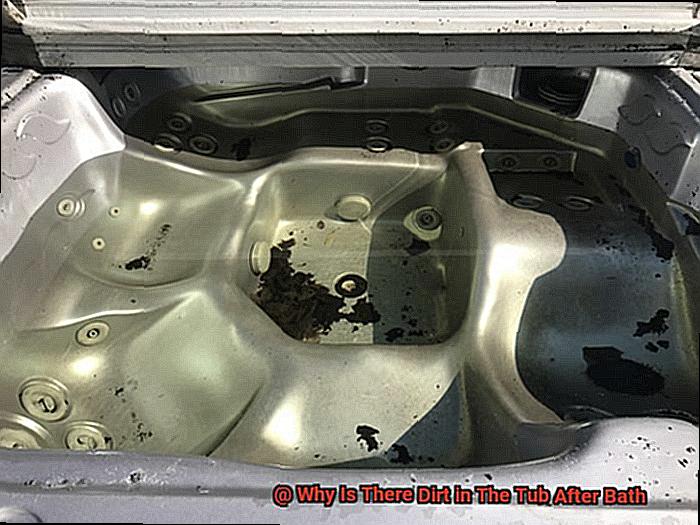
So, make sure you prioritize regular tub maintenance in your home.
Natural Cleaners for Your Tub
Natural cleaners are an excellent option for keeping your tub clean. Not only are they better for the environment, but they’re also safer for you and your family.
Baking soda and vinegar are two natural cleaners that are effective at removing dirt, soap scum, and mildew from your bathtub. Mix baking soda with water to form a paste and apply it to the stained area. Let it sit for a few minutes before scrubbing with a soft brush or sponge.
To use vinegar as a cleaner, mix equal parts of white vinegar and water in a spray bottle. Spray it on the surface of your tub and wipe it clean with a soft cloth. With these natural cleaners, you can keep your tub clean without exposing yourself or the environment to harsh chemicals.
Preventing Standing Water
Standing water in your tub can lead to mold and mildew growth, which can cause health problems and discoloration or staining. To prevent standing water, make sure you remove any excess water from your tub after each use.
You can do this by using a squeegee or towel to wipe down the surface of your tub. Additionally, make sure your tub drains properly by removing any hair or debris that may be blocking the drain.
Inspecting Your Tub for Damage
Regularly inspecting your tub for signs of damage or wear is essential to prevent dirt buildup and maintain a clean and hygienic bathtub.
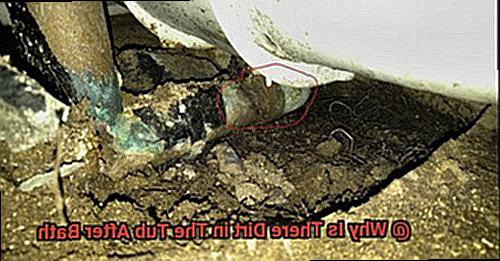
Cracks or chips in the surface of your tub can trap dirt and grime, making it more difficult to keep clean. If you notice any damage, it’s important to repair it as soon as possible to prevent further damage.
Rinsing Your Tub After Each Use
Rinsing your tub after each use is an easy way to prevent dirt and grime buildup. This will help to remove any leftover soap or body oils that can attract dirt and grime.
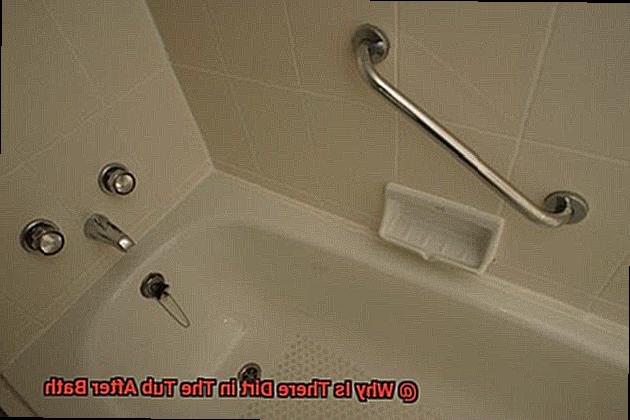
How to Remove Existing Buildup from the Tub
As much as we love a relaxing bubble bath, the buildup that accumulates in the tub can be quite frustrating to deal with. But don’t worry, there are several effective methods for removing existing buildup from your tub. In this post, we’ll explore five different ways to get your tub sparkling clean again.
Using Commercial Tub Cleaners:
Commercial tub cleaners are a popular choice for removing buildup from your tub. These cleaners are specially formulated to dissolve soap scum, mineral deposits, and other forms of buildup that accumulate over time. With various forms like sprays, powders, or gels, they can be easily found at most grocery or home improvement stores.
Simply apply the cleaner to the affected areas, let it sit for a few minutes, and then scrub away the buildup with a soft-bristled brush or sponge. It’s like having a superhero come to rescue your tub.
Using Homemade Cleaning Solutions
If you prefer natural cleaning solutions or want to save some money, you can create a homemade cleaning solution using simple household ingredients such as baking soda and vinegar.
This natural cleaning solution is gentle yet effective and can be made by mixing equal parts baking soda and white vinegar together until a paste is formed.
Apply the paste to the affected areas of the tub, let it sit for a few minutes, and then scrub away the buildup with a soft-bristled brush or sponge. This method is like making your own magic potion that will leave your tub sparkling clean.
Using Stronger Solutions
For more stubborn buildup, you may need a stronger solution. Mix one part bleach with nine parts water and apply it to the affected areas of the tub. Let the solution sit for 15-20 minutes before scrubbing with a sponge or brush.
It is important to wear gloves and use caution when using bleach as it can be harmful if ingested or inhaled. This method is like calling in for backup when things get tough.
Regular Maintenance
Prevention is always better than cure. After each use of the tub, rinse it thoroughly with hot water to remove any leftover soap or shampoo residue. Using a squeegee to remove excess water after each use can also help prevent buildup from forming.
These methods are like having a daily routine for your tub, just like brushing your teeth every day to keep them clean.
Using Shower Filters and Natural Soap Products:
Using a shower filter can help remove minerals and other impurities from the water before it even enters the tub.
Similarly, using natural soap products and avoiding harsh chemicals can help prevent soap scum and other forms of buildup from accumulating on the surface of the tub.
This method is like feeding your tub healthy food and giving it a spa treatment, making it look and feel its best.
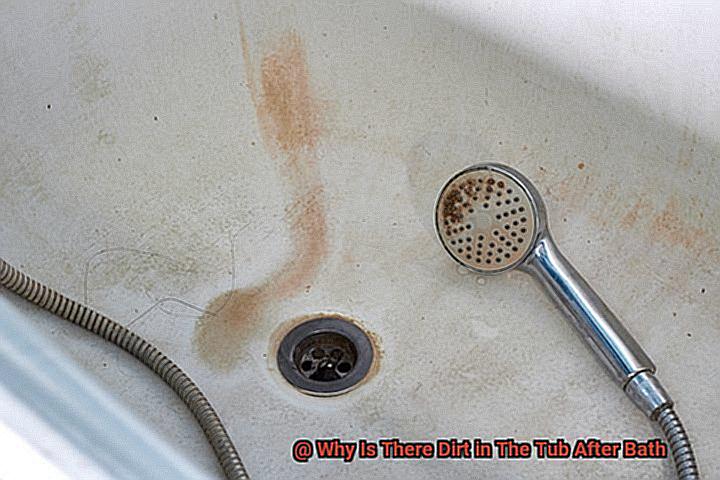
Common Mistakes to Avoid When Cleaning the Tub
Now that we’ve covered some effective methods for removing buildup from your bathtub, it’s time to address some common mistakes to avoid when cleaning the tub. By avoiding these missteps, you’ll be able to keep your tub looking fresh and clean for longer.
First, using the wrong cleaning products can be a big no-no. While you might think tough stains require tough cleaners, using abrasive products can actually damage the surface of your tub and create scratches that trap dirt and bacteria.
Instead, opt for a non-abrasive cleaner specifically designed for use on tubs. Think of it like treating your tub with a gentle touch – it deserves some TLC too.
Another mistake people often make is not rinsing the tub thoroughly after cleaning. We get it – it’s an extra step that can feel like a hassle.
But any leftover cleaning solution can leave a residue that attracts even more dirt and grime. So, make sure to rinse the tub thoroughly with clean water after cleaning and wipe it dry with a clean towel.
It’s important to use a clean and fresh sponge or cloth each time you clean the tub to ensure that you’re actually removing dirt instead of spreading it around. And while we’re on the topic of using too much cleaner – less is more.
Using too much can actually make the problem worse by leaving behind a film that attracts even more dirt and grime. So, stick to the recommended amount and save yourself from extra scrubbing later on.
Lastly, don’t forget about those hard-to-reach areas like the corners and edges of the tub. Neglecting these spots can contribute to dirt buildup over time.
A-fwcSHwjHQ” >
Conclusion
In conclusion, finding dirt in the tub after a bath is a common occurrence.
It could be due to various factors such as dead skin cells, sweat, and product buildup. However, regular cleaning and maintenance of your bathtub can help reduce the amount of dirt left behind after each use.
Remember to also rinse off any excess soap or body wash before stepping out of the tub to minimize residue buildup.

